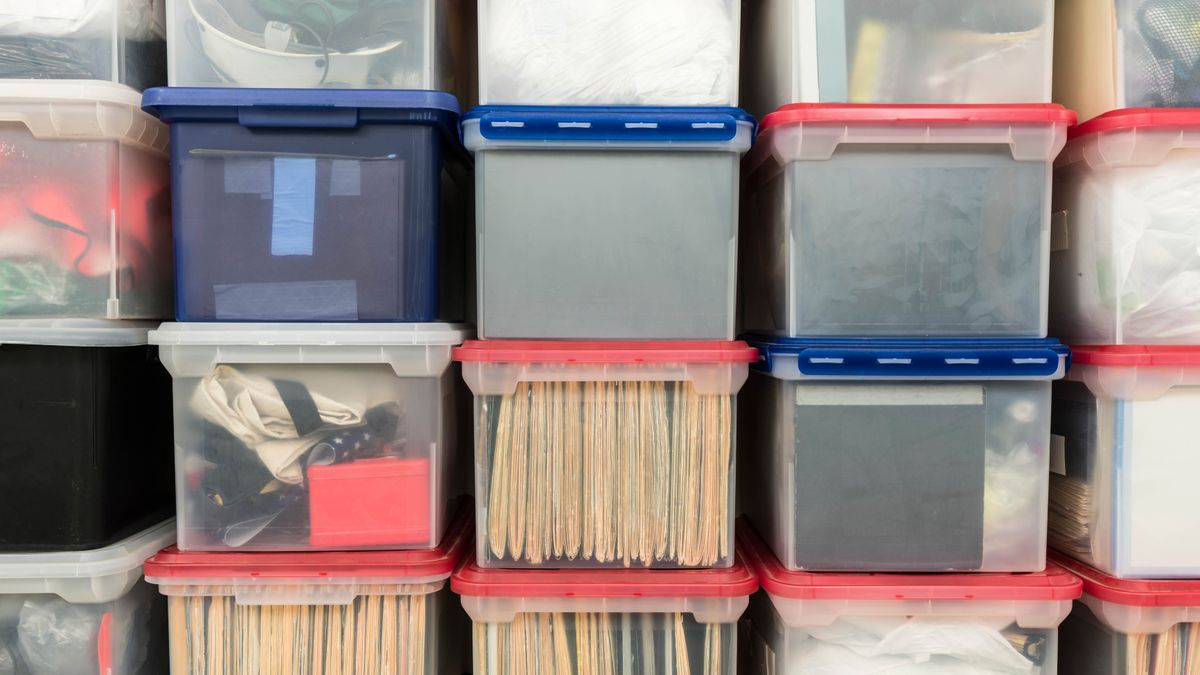Ditch the Danger: 7 No-Nos for Storing in Plastic Containers
Introduction
Plastic storage bins may seem like the perfect solution for decluttering, but not all items thrive in this environment. The material’s moisture-trapping and odor-absorbing tendencies, coupled with home temperature fluctuations, can spell trouble for certain belongings. Before you embark on a home organization spree, let’s delve into the seven things that demand alternative storage solutions to protect them.
1. Leather Items: Shielding Luxury from Moisture
Leather’s elegance is easily tarnished by excess moisture. Plastic containers can become breeding grounds for mold, potentially ruining your prized leather possessions. Opt for breathable fabric storage bags to preserve their quality.
2. Delicate Fabrics: A Breath of Fresh Air for Your Threads
Silk, lace, and other delicate fabrics despise the damp confines of plastic. Keep these materials safe from moisture-induced damage by storing them in breathable fabric storage bags, ensuring they maintain their original texture and sheen.
3. Electronic Gadgets and Batteries: Battling the Static Storm
Plastic containers generate static electricity, which can harm electronic gadgets and batteries. Safeguard your tech treasures with anti-static packaging to ensure they remain fully operational.
4. Important Documents: Shielding Papers from Fading
Crucial documents risk fading or discoloration when confined in plastic. Consider file organizers or sealed document storage to protect your paperwork from the adverse effects of plastic containers.
5. Artwork and Photography: Beyond Plastic Preservation
Artistic treasures like paintings and photographs require special care. Acid-free storage solutions are a must to prevent deterioration, ensuring your visual delights retain their vibrancy over time.
6. Food Supplies: A Feast for Freshness
Plastic’s susceptibility to temperature variations and odors makes it unsuitable for storing food supplies. Opt for glass or food-grade containers to preserve the freshness and quality of your pantry items.
7. Pet Food: Nutritional Integrity Matters
Direct contact with plastic can compromise the nutritional value of pet food. Instead, maintain the food in its original bag and use a larger plastic container to avoid contamination while ensuring your furry friend gets optimal nutrition.
Key Takeaway:
Understanding the limitations of plastic containers and opting for alternative storage solutions tailored to each item’s needs ensures longevity and protection against potential hazards.
Questions and Answers:
Q1: Why is leather susceptible to damage in plastic containers?
A1: Excess moisture trapped in plastic can lead to mold and degradation of leather items.
Q2: How can I protect delicate fabrics from moisture?
A2: Opt for breathable fabric storage bags that allow air circulation while keeping delicate fabrics safe.
Q3: Are there alternatives for preserving the freshness of food supplies?
A3: Yes, use glass or food-grade containers to prevent temperature variations and odors from affecting your pantry items.
Conclusion:
While plastic containers are excellent for many organizing needs, certain items require a more thoughtful approach. By understanding the vulnerabilities of plastic, and employing alternative storage solutions, you can safeguard your belongings, ensuring they stand the test of time in both and conditions.

